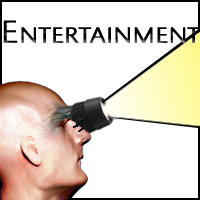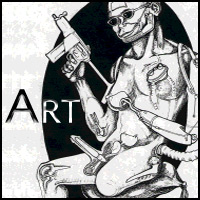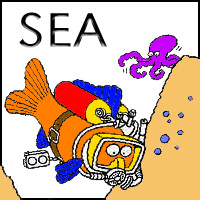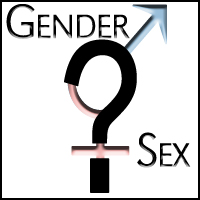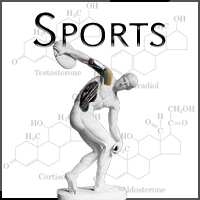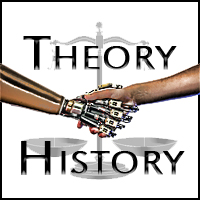
WELCOME TO THE CYBORG DATABASEWelcome to the Cyborg Data Base. This site was founded by the participants of an undergraduate research seminar at the University of California at Santa Cruz but it is NOT an official product of UCSC nor is UCSC responsible in any way for its content. It is an ongoing database and map of our emerging cyborg society and we welcome all cyborgologists who wish to join us in this endeavor. FEATURED ARTICLE:This week's featured article is titled "The Caesars" and was written by Charlette Lim Yankowitz. It is a delightful, short, fictional piece that you will certainly enjoy reading. HOW TO PROPERLY FORMAT AN ARTICLE FOR SUBMISSION:Formatting submitted articles to display properly on this website takes the developer a very long time. To avoid this, please follow the steps outlined in the SubmitDoc.pdf. A demo .ZIP file is also available, in the event you become confused. Thank you! WHY A CYBORG DATABASE?Any observer of contemporary culture would have to acknowledge that the human species is involved in an extraordinary, and accelerating, technological transformation of the biosphere with such side effects as the cultivation of most of the world's wild, the "invention" of domestic animals, crops and fire, urbanization, mass extinctions, monocultures (the corn of Iowa), billions of humans and global warming. This includes our own self-modification of the body directly (make-up, tattoos, piercings, exercise, vaccination, surgery, genetic engineering) and with prosthesis, both inert (clothes, glasses, other tools), active as through intimate machine interfaces (musical instruments, bikes, cars, computers) and as implants (myloelectricarms, pacemakers). This process, this constant making and remaking the world, is not unique to humans--beavers dam, bees build hives, birds weave nests. But the system of culture, growing out of language, has made it possible for humans to develop technoscience and an ever expanding process of improving that technoscience that is producing the world changing effects of today. Qualitatively and quantitatively, human technoscientific culture is unique on this planet, and dominant for now. One doesn't have to call this a Cyborg Society, although on this site you will certainly find many arguments for the utility of this approach. Other observers prefer to see it as a fundamental aspect of modernity, or postmodernity, or focusing more on the merging of organic and machinic it has been labeled "the Vital Machine" (Channel 1991), or the "Fourth Discontinuity" that goes beyond the human/machine dichotomy (Mazlish 1993) or it is the global system of humans and their machines as a giant "Metaman" (Stock 1993). All these schemas have something to offer and certainly all critiques, challenges, rejections, modifications, additions and improvements of the term cyborg and the concepts of cyborgization, cyborgology, and cyborg society, among others, are welcome here.
Meanwhile, in just one day, the active cyborgologist might watch for the first time the successful Cable Television series Jake 2.0: The ultimate human upgrade about a nanotech enhanced government agent, read a history of car bombs, including the very cyborgian suicide car (and plane) systems (Davis 2007), and review a fine history of the Enlightenment ancestors of the cyborg perspective (Muri 2007). Something is happening along the border between human and machine, organic and machinic, animal and human, living and dead, natural and artificial, evolved and invented and that is what this site is about. Our understanding of what is happening, is indeed part of this process that has been called participant (Clynes and Kline 1960) or participatory (Gray 2001) evolution. Play your part! There is no one type of cyborg anymore than there is one type of tool or machine. We have created two mappings in the vertical and the top/horizontal menus. The vertical menu represents quasi-academic categories for the various articles that are on the CyborgDB. All articles are linked to at least one of these icons; most are linked to multiple icons. The top/horizontal menu is an attempt to lay out various ways of thinking about cyborgs. In many ways it is a meta-map, with each pull down category representing a particular perspective/framing on cyborgization. All articles have multiple links to this menu. We don't think that any mapping is definitive and certainly, none is innocent. Look to the history of the very term "mammal" (Schiebinger 2000). These various categories come from the "Cyborg Society" class and from the various contributors to The Cyborg Handbook, especially the editors (Gray, Mentor, Figueroa-Sarriera 1995). Bibliography
Channel, David (1991) The Vital Machine, Oxford University Press. WEB INTEGRITY:This site in its entirety maintains web standards set in place by The World Wide Web Consortium (W3C) and has been validated as proof. These standards allow for maximum cross-platform and cross-browser compatibility, and maximize the user's ability to interact with and view the site. These standards were hard to achieve within the code behind this site, and were equally as hard to maintain across the entire database. To maintain these standards, articles being considered for submission must be properly formatted. Feel free to test this site on multiple browsers, and please report any errors that you find.  Watch this space evolve! Check back periodically to see the site become filled with ever increasing volumes of interesting information. |

